
Crete: A Tapestry of Myth, Sun, and Sea
Discover the enchanting island of Crete, where ancient history meets breathtaking landscapes and vibrant culture. Explore ruins, relax on pristine beaches, and savor local cuisine.
Crete, the largest of the Greek islands, is a jewel in the Mediterranean Sea. Known for its stunning beaches, ancient ruins, and vibrant cities, Crete offers a unique blend of natural beauty and historical intrigue. From the bustling city of Heraklion to the serene shores of Elafonissi, there's something for every traveler to enjoy. Crete's history stretches back thousands of years, with the Minoan civilization leaving a lasting legacy on the island. Visitors can explore the ancient palace of Knossos, believed to be the center of the Minoan world. The island is also home to numerous museums, where artifacts tell the story of Crete's rich past. In addition to its historical sites, Crete boasts some of the most picturesque landscapes in Greece. The Samaria Gorge, one of Europe's longest gorges, offers a challenging hike through stunning scenery. For those seeking relaxation, the island's beaches, such as Balos and Vai, provide crystal-clear waters and soft sands. Crete's cuisine is another highlight, with fresh, local ingredients creating delicious dishes. From the famous Cretan dakos to fresh seafood, the island's food is a feast for the senses. Be sure to try the local olive oil, renowned for its quality and flavor. Whether you're a history buff, a nature lover, or a foodie, Crete has something to offer. Its warm climate, friendly locals, and diverse attractions make it an ideal destination for any traveler.
Local tips in Crete
- Rent a car to explore the island. Public transport can be limited, and a car allows you to visit remote beaches and villages.
- Visit Knossos early in the morning or late in the afternoon to avoid crowds and the midday heat.
- Wear comfortable shoes for hiking the Samaria Gorge. It's a long and challenging trek but well worth the effort.
- Try the local wines. Crete has a long history of winemaking, and local varieties are unique and flavorful.
- Stay in a traditional Cretan village to experience local culture and hospitality.
Neighbourhoods in Crete
Crete: A Tapestry of Myth, Sun, and Sea
Crete, the largest of the Greek islands, is a jewel in the Mediterranean Sea. Known for its stunning beaches, ancient ruins, and vibrant cities, Crete offers a unique blend of natural beauty and historical intrigue. From the bustling city of Heraklion to the serene shores of Elafonissi, there's something for every traveler to enjoy. Crete's history stretches back thousands of years, with the Minoan civilization leaving a lasting legacy on the island. Visitors can explore the ancient palace of Knossos, believed to be the center of the Minoan world. The island is also home to numerous museums, where artifacts tell the story of Crete's rich past. In addition to its historical sites, Crete boasts some of the most picturesque landscapes in Greece. The Samaria Gorge, one of Europe's longest gorges, offers a challenging hike through stunning scenery. For those seeking relaxation, the island's beaches, such as Balos and Vai, provide crystal-clear waters and soft sands. Crete's cuisine is another highlight, with fresh, local ingredients creating delicious dishes. From the famous Cretan dakos to fresh seafood, the island's food is a feast for the senses. Be sure to try the local olive oil, renowned for its quality and flavor. Whether you're a history buff, a nature lover, or a foodie, Crete has something to offer. Its warm climate, friendly locals, and diverse attractions make it an ideal destination for any traveler.
When is the best time to go to Crete?
Iconic landmarks you can’t miss
Knossos Palace
Discover the ancient splendor of Knossos Palace, the heart of Minoan civilization, and explore its fascinating history in a stunning open-air museum.

Heraklion Archaeological Museum
Explore the Heraklion Archaeological Museum, home to Minoan treasures and artifacts that unveil the rich history of Crete's ancient civilization.

Morosini Fountain
Explore the Morosini Fountain, a stunning historical landmark in Heraklion, showcasing exquisite Venetian architecture and vibrant local culture.
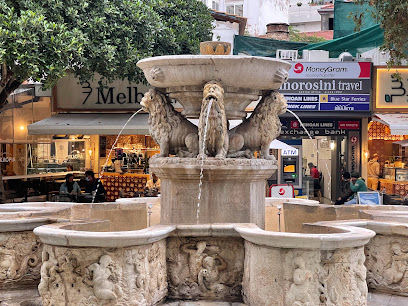
Venetian Fortezza Castle
Discover the enchanting Venetian Fortezza Castle in Rethimno—an architectural marvel steeped in history and breathtaking views of the Mediterranean.

Rocca a Mare Fortress
Discover the historical splendor of Rocca a Mare Fortress in Heraklion, a remarkable landmark showcasing Crete's Venetian heritage and breathtaking coastal views.

Rimondi Fountain
Explore the Rimondi Fountain: A stunning Renaissance landmark in Rethymno that embodies the rich history and culture of Crete.

Caves Matala
Explore the historical Caves of Matala, a unique blend of natural beauty and rich heritage on Crete's stunning southern coast.

Cave of Diktaion Andron
Explore the Cave of Diktaion Andron in Crete – a mystical site filled with natural wonders and rich Greek mythology, where Zeus was born.

Minoan Palace of Phaistos
Explore the Minoan Palace of Phaistos, a historical landmark in Crete that reveals the ancient civilization's rich culture and architectural marvels.

Melidoni Cave
Discover the stunning formations and rich history of Melidoni Cave, a must-visit landmark in Crete, Greece, steeped in mythology and natural beauty.
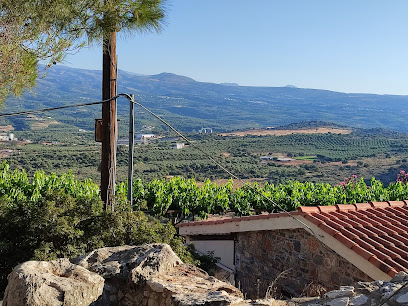
Guora gate
Explore the historical Guora Gate in Rethymno, a gateway to the city's rich past and vibrant culture, surrounded by charming streets and local delights.

Natural History Museum of Crete
Discover the vibrant natural history of Crete at the Natural History Museum, where education meets adventure in the heart of Heraklion.
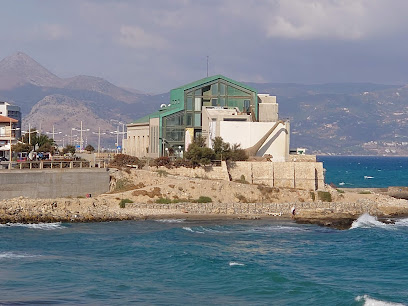
Church of Agios Minas
Discover the exquisite beauty and spiritual significance of the Church of Agios Minas in the heart of Heraklion, Crete's majestic cathedral.

Malia Palace Archaeological Site
Explore the ancient Malia Palace Archaeological Site in Crete, where the fascinating history of the Minoan civilization comes to life amid stunning Mediterranean landscapes.

Venizelos Graves
Discover the serene beauty and historical significance of Venizelos Graves in Chania, a peaceful tribute surrounded by stunning views of Crete.
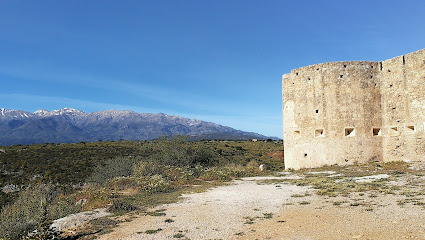
Unmissable attractions to see
Knossos Palace
Explore the enchanting ruins of Knossos Palace, the heart of Minoan civilization, where history, art, and legend intertwine in a captivating journey.

Heraklion Archaeological Museum
Explore the rich heritage of Crete at the Heraklion Archaeological Museum, home to remarkable Minoan artifacts and an unparalleled cultural experience.

CRETAquarium Thalassokosmos
Explore the fascinating world of marine life at CRETAquarium Thalassokosmos in Heraklion, where education meets adventure in stunning exhibits.

Morosini Fountain
Discover the Morosini Fountain in Heraklion: A historical landmark blending Venetian architecture with the lively spirit of Crete.

Fortezza of Rethymnon
Experience the grandeur of the Fortezza of Rethymnon, a historical gem offering stunning views and a journey through Crete's Venetian past.
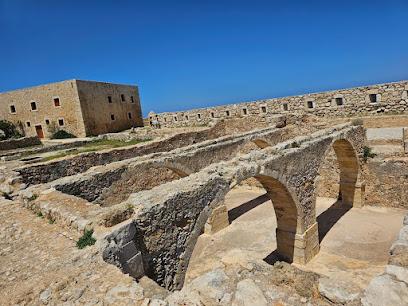
Rocca a Mare Fortress
Explore Heraklion's Rocca a Mare Fortress, a stunning Venetian landmark offering rich history and panoramic views of the Mediterranean coastline.

Rimondi Fountain
Explore the Rimondi Fountain in Rethymno, a historical landmark that showcases stunning architecture and a rich cultural heritage amidst vibrant local life.

Preveli beach
Experience the breathtaking beauty of Preveli Beach, where golden sands meet lush palm trees and azure waters on the stunning coast of Crete.

Arkadi Monastery
Explore the majestic Arkadi Monastery, a historic symbol of Cretan resilience and spirituality, set amidst breathtaking landscapes in Crete, Greece.

Heraklion Venetian Port
Experience the enchanting Heraklion Venetian Port, a historic gem that blends stunning views, local culture, and rich maritime heritage.

Matala beach
Discover the stunning Matala Beach in Crete, where crystal-clear waters meet golden sands and unique historical caves.
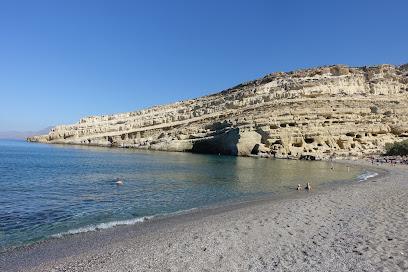
Minoan Palace of Phaistos
Unravel the secrets of the Minoan civilization at the breathtaking Palace of Phaistos, a historical gem in the heart of Crete.

Watercity Waterpark Crete
Experience endless fun and adventure at Watercity Waterpark in Heraklion, Crete, with thrilling slides, relaxing pools, and family-friendly attractions.

Melidoni Cave
Explore the stunning Melidoni Cave in Crete, a historical landmark filled with natural beauty and rich archaeological significance.

Kourtaliotiko Gorge
Explore Kourtaliotiko Gorge, a stunning natural preserve in Crete, Greece, featuring breathtaking landscapes, rich biodiversity, and historical treasures.

Essential places to dine
Peskesi
Discover authentic Cretan flavors at Peskesi in Heraklion – where tradition meets culinary excellence.

TAMAM RESTAURANT CHANIA
Experience authentic Cretan cuisine at Tamam Restaurant in Chania's enchanting Old Harbour – where every dish tells a story.

Salis
Discover exceptional dining at Salis in Chania - where modern European cuisine meets authentic Greek flavors amid stunning waterfront views.

Thigaterra - The Art of Slow Food
Discover Thigaterra: A premier destination for authentic Greek slow food in Ag. Dimitrios, celebrating local flavors with every dish.

Lemonokipos Restaurant
Experience authentic Greek cuisine at Lemonokipos Restaurant in Rethymno, where delightful flavors meet a picturesque ambiance under lemon trees.

Ta Kalitera
Discover authentic Mediterranean seafood at Ta Kalitera in Xeropotamos - where fresh flavors meet warm hospitality.

To Pigadi Restaurant
Experience authentic Mediterranean cuisine at To Pigadi Restaurant in Rethymno, where every dish celebrates Cretan flavors with fresh ingredients.
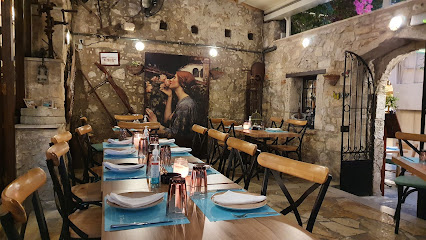
Georgia's Traditional Taverna
Experience authentic Greek flavors at Georgia's Traditional Taverna in Kournas - a culinary haven amidst Crete’s stunning landscapes.

Arismari, Cretan Creative Cuisine - Αρισμαρί, Από Την Κρητική Γη
Discover authentic Cretan cuisine at Arismari in Chania - where tradition meets creativity in every dish.

Pelagos Sea Side Restaurant
Experience authentic Greek cuisine with stunning sea views at Pelagos Sea Side Restaurant in Ag. Ioannis.

The Five Restaurant
Experience exquisite dining at The Five Restaurant in Chania, where local flavors meet breathtaking waterfront views.

Myrtios Traditional Taverna
Experience authentic Greek cuisine at Myrtios Traditional Taverna in Old Hersonissos – where every meal tells a story.

Arismari & Varsamo
Savor authentic Greek cuisine in the heart of Iraklion at Arismari & Varsamo – where tradition meets culinary artistry.

Theodosi restaurant
Experience exquisite Greek and Mediterranean cuisine at Theodosi Restaurant in Chania – where every dish tells a story.

Chagiati
Experience authentic Cretan cuisine at Chagiati in Heraklion – where tradition meets flavor in a cozy atmosphere.
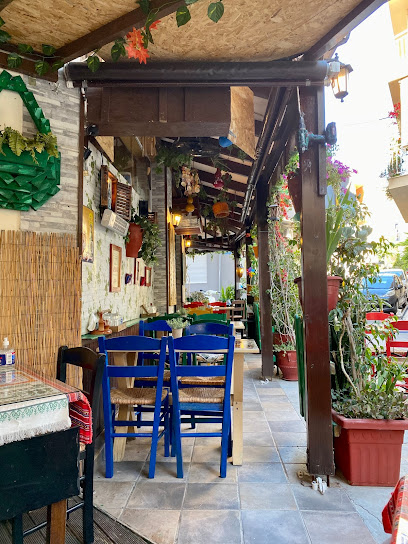
Markets, malls and hidden boutiques
Talos Plaza
Experience shopping, dining, and local culture at Talos Plaza, Heraklion's bustling shopping mall, perfect for tourists seeking a vibrant atmosphere.

Cretan Lyra workshop - Stagakis museum - Traditional instruments
Discover the rich traditions of Cretan music at the Cretan Lyra Workshop, where craftsmanship meets culture in a harmonious celebration.

To Kaniski
Discover To Kaniski in Kissamos - a charming shopping mall offering unique local crafts, organic products, and exquisite fashion accessories.

Irida Family Workshop
Explore Irida Family Workshop in Heraklion for exquisite handcrafted souvenirs and a glimpse into Greek artistry, perfect for every tourist.

ZALO
Explore ZALO in Heraklion for unique, handcrafted souvenirs that capture the spirit of Crete and elevate your travel experience.

Candiashop Fashion Boutique Ηράκλειο Κρήτης - Plus Size Women's Clothing, Bags & Accessories
Shop at Candiashop Fashion Boutique in Heraklion for stylish plus-size clothing, bags, and accessories that celebrate diversity and body positivity.

Alexander Natural shop and souvenirs
Discover the essence of Crete at Alexander Natural Shop and Souvenirs, where every purchase tells a story of local craftsmanship and culture.

Shopping Center
Discover unique clothing and local souvenirs at the vibrant Shopping Center in Αγκισαράς, a must-visit for every traveler.

Temple Gift Shop
Explore the Temple Gift Shop: A treasure trove of handmade souvenirs and stunning mosaic lamps in the heart of Chania, Crete.

Venus shop
Uncover the fashion treasures of Venus Shop in Agia Pelagia, where style meets local charm in a unique shopping experience.

KURKUTA
Discover unique souvenirs and stylish T-shirts at KURKUTA, the charming gift shop in Chania, Greece, reflecting the island's culture and artistry.

Mayaba Store
Explore Mayaba Store in Heraklion for unique antiques and handcrafted furniture that reflect Greece's rich culture and artistry.

Souvenir Market
Discover unique Greek souvenirs and local crafts at the vibrant Souvenir Market in Hersonissos, perfect for tourists seeking memorable keepsakes.

Greek Unique Concept Gift Store
Discover the essence of Greece with unique souvenirs at the Greek Unique Concept Gift Store in Rethymno.

Minos Shop
Discover unique fashion at Minos Shop in Heraklion, Crete – your go-to clothing destination for stylish souvenirs.
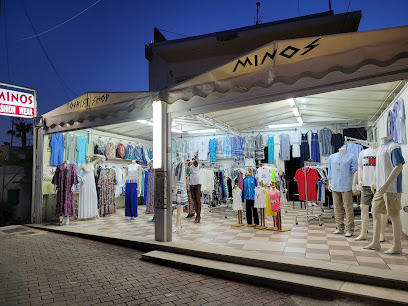
Essential bars & hidden hideouts
Sinagogi coctail bar
Discover Sinagogi Cocktail Bar in Chania, where innovative cocktails meet a vibrant nightlife experience amidst charming surroundings.

Chaplins
Experience the vibrant atmosphere and delicious flavors of Chaplins, Rethymno's beloved gastropub and bar.

Swing Thing
Discover Swing Thing in Heraklion: A cocktail bar where creativity and flavor meet, offering unique drinks in a vibrant atmosphere.

Fagotto Jazz Bar Chania
Experience the soulful rhythms of jazz at Fagotto Jazz Bar in Chania, where every night is a celebration of music and good company.

The Bitters Bar
Experience the essence of Heraklion's nightlife at The Bitters Bar, where expertly crafted cocktails meet a vibrant atmosphere.

Jailhouse Rock Bar
Experience the dynamic nightlife of Heraklion at Jailhouse Rock Bar, renowned for its unique ambiance and extensive rum selection.
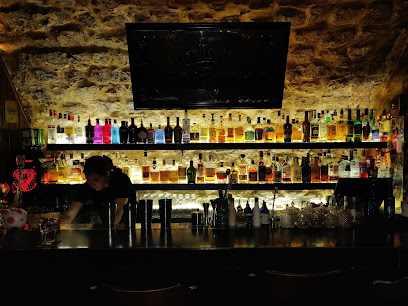
Senses Club
Experience the vibrant nightlife at Senses Club in Gazi, a cocktail bar, coffee shop, and night club rolled into one unforgettable destination.

Peacock Tail Bar
Discover an unforgettable nightlife experience at Peacock Tail Bar in Chania, where every cocktail is a masterpiece and every night is a celebration of flavor.

Blue N Blum
Discover Blue N Blum, a charming bar in Gazi offering an array of drinks and a cozy atmosphere perfect for unwinding after a day of exploration.

'BARAKI' Bar
Discover the vibrant nightlife at 'BARAKI' Bar in Kato Gouves, where cocktails, hookahs, and sports meet in a lively atmosphere.

The Jolly Roger
Experience vibrant nightlife at The Jolly Roger in Sisi, Greece, where great drinks, atmosphere, and friendly service await every visitor.

Stone Project
Discover Heraklion's vibrant nightlife at Stone Project, where expertly crafted cocktails and a lively atmosphere await.

Isla - bistrot & cocktail bar
Explore Isla - Bistrot & Cocktail Bar in Schisma Eloundas for a delightful blend of Mediterranean cuisine and refreshing cocktails in a stunning coastal setting.
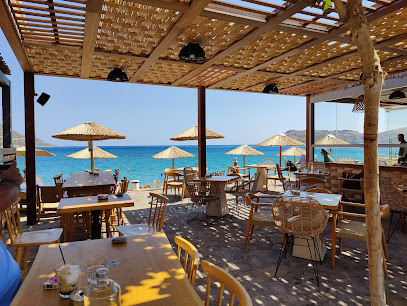
Best Mojito Yannis
Experience the refreshing taste of signature mojitos at Best Mojito Yannis, a vibrant bar in Matala, Greece, perfect for relaxation and enjoyment.

Hunky Funky Cocktail Bar
Experience the vibrant nightlife at Hunky Funky Cocktail Bar in Rethymno, where innovative cocktails meet a lively atmosphere for an unforgettable evening.

Travel experiences inspired by this city
Explore more travel diariesLocal Phrases
-
- HelloΓεια σας
[Ya sas] - GoodbyeΑντίο
[Adio] - YesΝαι
[Ne] - NoΌχι
[Ohi] - Please/You're welcomeΠαρακαλώ
[Parakalo] - Thank youΕυχαριστώ
[Efharisto] - Excuse me/SorryΣυγγνώμη
[Signomi] - How are you?Τι κάνεις;
[Ti kanis?] - Fine. And you?Καλά. Εσύ;
[Kala. Esi?] - Do you speak English?Μιλάτε αγγλικά;
[Milate anglika?] - I don't understandΔεν καταλαβαίνω
[Den katalaveno]
- HelloΓεια σας
-
- I'd like to see the menu, pleaseΘα ήθελα να δω το μενού, παρακαλώ
[Tha ithela na do to menu, parakalo] - I don't eat meatΔεν τρώω κρέας
[Den troo kreas] - Cheers!ΥΓΕΙΑ!
[Yia] - I would like to pay, pleaseΘα ήθελα να πληρώσω, παρακαλώ
[Tha ithela na pliros-o, parakalo]
- I'd like to see the menu, pleaseΘα ήθελα να δω το μενού, παρακαλώ
-
- Help!Βοήθεια!
[Voithia!] - Go away!Φύγε!
[Fi-ge!] - Call the Police!Καλέστε την Αστυνομία!
[Ka-leste tin Astinomia!] - Call a doctor!Καλέστε γιατρό!
[Ka-leste giatro!] - I'm lostΈχω χαθεί
[Eho ha-thee] - I'm illΕίμαι άρρωστος
[E-mai a-ro-stos]
- Help!Βοήθεια!
-
- I'd like to buy...Θα ήθελα να αγοράσω...
[Tha ithela na agoras-o] - I'm just lookingΑπλά κοιτάω
[Apla kitao] - How much is it?Πόσο κοστίζει;
[Poso kostizi?] - That's too expensiveΑυτό είναι πολύ ακριβό
[Afto ine poli akri-vo] - Can you lower the price?Μπορείτε να μειώσετε την τιμή;
[Borite na mei-ose-te tin timi?]
- I'd like to buy...Θα ήθελα να αγοράσω...
-
- What time is it?Τι ώρα είναι;
[Ti ora ine?] - It's one o'clockΕίναι μία η ώρα
[E-ne mia i ora] - Half past (10)Μισή (10)
[Mi-si (10)] - MorningΠρωί
[Pro-i] - AfternoonΑπόγευμα
[A-po-yef-ma] - EveningΒράδυ
[Vra-thi] - YesterdayΧτες
[Htes] - TodayΣήμερα
[Si-mera] - TomorrowΑύριο
[Au-rio] - 1Ένα
[E-na] - 2Δύο
[Thi-o] - 3Τρία
[Tri-a] - 4Τέσσερα
[Te-se-ra] - 5Πέντε
[Pen-de] - 6Έξι
[E-xi] - 7Επτά
[Ep-ta] - 8Οκτώ
[Ok-to] - 9Εννιά
[En-nia] - 10Δέκα
[The-ka]
- What time is it?Τι ώρα είναι;
-
- Where's a/the...?Πού είναι ένα/το...;
[Pou ine ena/to...?] - What's the address?Ποια είναι η διεύθυνση;
[Pia ine i diefthinsi?] - Can you show me (on the map)?Μπορείτε να μου δείξετε (στο χάρτη);
[Borite na mou di-xe-te (sto har-ti)?] - When's the next (bus)?Πότε είναι το επόμενο (λεωφορείο);
[Pote ine to e-po-meno (leoforio)?] - A ticket (to ....)Ένα εισιτήριο (για...);
[Ena isiti-rio (gia...)?]
- Where's a/the...?Πού είναι ένα/το...;
History of Crete
-
Crete is widely regarded as the birthplace of the Minoan civilization, which flourished from approximately 2600 to 1100 BCE. The Minoans are credited with creating Europe's first advanced civilization, characterized by its impressive palaces, sophisticated art, and intricate writing systems such as Linear A. The Palace of Knossos, located near the modern-day city of Heraklion, is one of the most prominent archaeological sites from this period.
-
According to Greek mythology, Crete is home to the legendary labyrinth that housed the Minotaur, a creature with the body of a man and the head of a bull. The labyrinth was constructed by the master craftsman Daedalus under the orders of King Minos. This mythological tale is deeply intertwined with the history of the Minoan palace at Knossos and remains one of the most captivating stories associated with Crete.
-
Around 1450 BCE, the Minoan civilization began to decline, possibly due to natural disasters like earthquakes and volcanic eruptions. This period saw the rise of the Mycenaeans from mainland Greece, who gradually took over Crete. The Mycenaeans adopted many aspects of Minoan culture, including their art and writing systems, and continued to use the palaces on the island.
-
In 67 BCE, the Roman Empire conquered Crete after a protracted and bloody campaign. The island was subsequently integrated into the Roman province of Crete and Cyrenaica. Under Roman rule, Crete experienced a period of relative peace and prosperity, with the construction of significant infrastructure such as roads, aqueducts, and public buildings.
-
Following the fall of the Western Roman Empire, Crete became part of the Byzantine Empire. However, in 824 CE, the island was captured by Arab forces, who established the Emirate of Crete. This period saw the construction of the city of Chandax (modern-day Heraklion) as a major center of commerce and piracy. The Byzantines recaptured the island in 961 CE, leading to a revival of Christian culture and architecture.
-
In 1204, after the Fourth Crusade, Crete came under the control of the Republic of Venice. The Venetians ruled the island for over four centuries, leaving a lasting impact on its architecture, art, and culture. The fortresses, harbors, and buildings from this period, such as the Fortezza in Rethymno and the Venetian Harbor in Chania, are still prominent landmarks today.
-
Crete was conquered by the Ottoman Empire in 1669 after a protracted siege of Candia (Heraklion). The Ottoman rule lasted until the late 19th century and brought significant changes to the island's social and religious landscape. Many churches were converted to mosques, and the influence of Ottoman architecture is still visible in cities like Heraklion and Chania.
-
One of the most significant events in Crete's modern history is the Battle of Crete during World War II. In May 1941, Nazi Germany launched an airborne invasion of the island, which was defended by Allied forces and Cretan resistance fighters. Despite their eventual defeat, the fierce resistance put up by the Cretans became legendary and demonstrated the indomitable spirit of the island's inhabitants.
-
After World War II, Crete became part of the modern Greek state and has since developed into a major tourist destination. The island's rich history, diverse culture, and stunning landscapes attract millions of visitors each year. The preservation of its historical sites, combined with vibrant local traditions, ensures that Crete remains a living testament to its storied past.
Crete Essentials
-
Crete, Greece's largest island, can be accessed by both air and sea. The island has two international airports: Heraklion International Airport (HER) and Chania International Airport (CHQ), both well-connected to major cities in Europe. Ferries from Athens' Piraeus Port also serve Crete, docking at Heraklion, Chania, and Rethymnon ports. Ferry services are frequent, especially during the summer months.
-
Public transport, including buses operated by KTEL, is reliable and covers most of the island. Renting a car is a popular choice for exploring remote areas and beaches. Taxis are available in larger towns and cities, and ride-hailing apps like Beat are commonly used. Motorbikes and bicycles can also be rented for shorter distances. Roads can be narrow and winding, so drive cautiously.
-
The official currency in Crete is the Euro (EUR). Credit and debit cards are widely accepted in hotels, restaurants, and larger shops, but it's advisable to carry cash, especially in rural areas or smaller establishments. ATMs are readily available in towns and tourist areas. Tipping is customary but not obligatory; rounding up the bill or leaving 5-10% is appreciated.
-
Crete is generally a safe destination for tourists. However, pickpocketing can occur in crowded places such as markets and tourist spots. Areas like Heraklion's city center may experience higher rates of petty crime, so remain vigilant and avoid displaying valuables. Always keep an eye on personal belongings and use hotel safes for storing important documents and valuables.
-
In case of emergency, dial 112, the European emergency number. For medical emergencies, public hospitals are available in major cities like Heraklion, Chania, and Rethymnon. Pharmacies are widespread and can provide over-the-counter medications. It is recommended to have travel insurance that covers medical emergencies. Police stations are located in all towns for reporting crimes.
-
Fashion: Do dress modestly when visiting religious sites. Avoid overly revealing clothing. Religion: Do respect local customs, such as covering your shoulders and knees in churches and monasteries. Public Transport: Do be courteous and offer your seat to elderly passengers. Don’t speak loudly or eat on public transport. Greetings: Do greet people with a polite 'Kalimera' (Good morning) or 'Kalispera' (Good evening). Eating & Drinking: Do try local dishes and wines. Don’t rush meals; dining is a leisurely activity in Crete.
-
To experience Crete like a local, visit the village tavernas for authentic Cretan cuisine. Engage with locals, who are known for their hospitality and willingness to share stories about their island. Participating in local festivals and fairs can offer a deeper understanding of Cretan culture. Don’t miss out on exploring the less touristy villages and natural landscapes, such as the Samaria Gorge and Elafonissi Beach.
Trending Landmark in Crete
-
Knossos Palace
-
Heraklion Archaeological Museum
-
Morosini Fountain
-
Venetian Fortezza Castle
-
Rocca a Mare Fortress
-
Rimondi Fountain
-
Caves Matala
-
Cave of Diktaion Andron
-
Minoan Palace of Phaistos
-
Melidoni Cave
-
Guora gate
-
Natural History Museum of Crete
-
Church of Agios Minas
-
Malia Palace Archaeological Site
-
Venizelos Graves
Nearby Cities to Crete
-
Things To Do in Rethymno
-
Things To Do in Heraklion
-
Things To Do in Chania
-
Things To Do in Pyrgos
-
Things To Do in Santorini
-
Things To Do in Mykonos
-
Things To Do in Kos
-
Things To Do in Bodrum
-
Things To Do in Kalamata
-
Things To Do in Nafplio
-
Things To Do in Athens
-
Things To Do in Rhodes
-
Things To Do in Samos
-
Things To Do in Marmaris
-
Things To Do in Kusadasi























